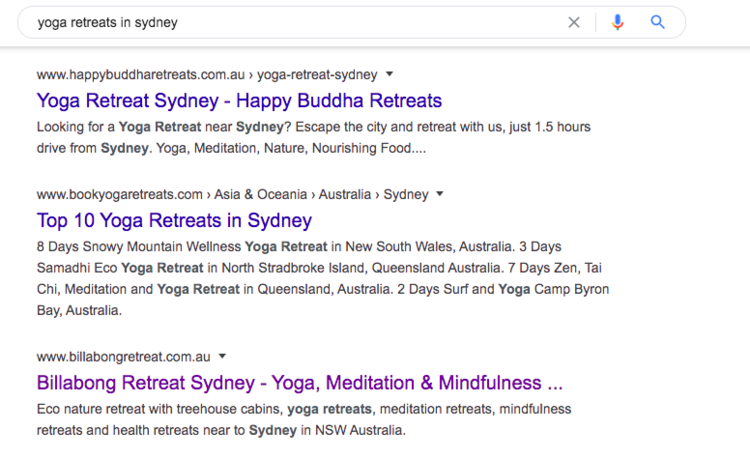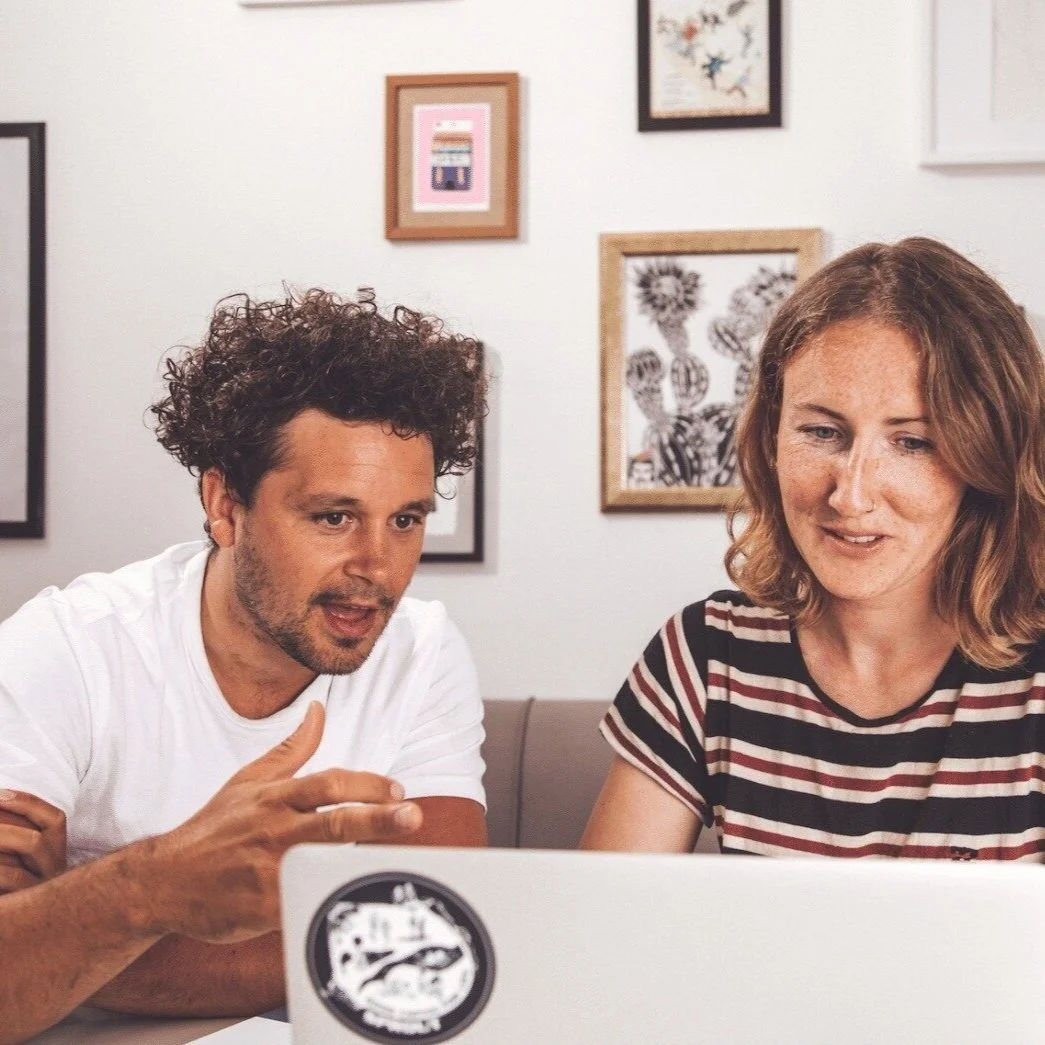Why is the user's experience on-page of your website important for your SEO?
Granted, keywords are an integral part of getting your SEO spot-on. It’s the perfect place to start. But you’ve done all your research, rewritten your copy to integrate the most commonly searched for terms, but you just need that extra edge to help you stand out above the competition.
It’s not all technical.
There are some human factors that can seriously improve your SEO ranking.
So it’s as much about persuading people to click on your website as it is about providing the user with relevant, useful, valuable content once they have actually clicked on your page.
As we discussed before, (in “The HOWs of SEO: the technical stuff”) Google is looking to provide its users with the most efficient answer to their query. Then their experience ON the website, itself, also makes a difference.
How people react to you on Google.
Let’s go back to thinking about our meta descriptions.
I’m gunna use the same example as last time, looking at our yoga retreats on the east coast of Australia.
The meta description shows our potential customers what our content is about and the things they will learn if they click through to the rest of the site.
Take a look at all top 3 results again for yoga retreats in Sydney. Are there ones that stand out to you more than others?
The first result mentions escaping the city: for busy nine-to-fivers, that might be the perfect solution they’re looking for.
The second result is a retreat in the snow: if you’re a beginner yogi, a whole 8-days might sound too intense, and the mention of tai-chi and meditation may be intimidating to someone just starting to learn their basic postures.
The third result option talks about being in nature, so if you’re into a more holistic approach and want to learn more about mindfulness, this might be the one that stands out to you.
There are draws and pulls of each one - so what we need to consider is not just the placement of keywords, but also think about who you will be attracting and repelling through the language you use in your meta descriptions.
Try and be persuasive and alluring to the people you want to attract, without ostracising a certain percentage of the people that see your meta description with language that is too technical or boring.
How can you entice people to click on your website, instead of the others that pop up alongside you in the results?
*Top tip* If you don’t actively seek out the meta description box to write a strategic, well thought-through summary, Google will just pull the first few lines of your website copy or blog article to stand in for the meta description on the search engine results pages.
So if the first few lines aren’t a good indicator of what’s to come later on, and it isn’t actively persuading your ideal client to click on your site to find out more, it’s really important to design your meta description to make sure you’re getting the engagement you want (and deserve).
Make a connection on-page.
So we’ve sussed our keyword integration, and have managed to get people onto our website. Now, the longer we can keep them there, the better for our SEO ranking.
But if people can’t find what they’re looking for and are clicking back to the results page pretty swiftly, Google sees the user found no value in what you had to say. Not good for our ‘points’.
Obviously Google can’t register human reactions, people putting an emotional investment in your brand, or the feeling of relief when someone has discovered your company as the answer to all their worries or frustrations.
Equally, Google cannot see when someone gets pissed off that they’re looking for prices on a site but just can’t find them, or their reaction to bad grammar and spelling in an article they’re reading. Google definitely can’t hear someone’s out-loud profanities when they’ve accidentally landed on a page that promised them what they were looking for in the meta description, but when they clicked on the page it had nothing to do with their original search query.
What Google does register is the amount of time each person spends on a website or webpage.
This is called the ‘session rate’ if you’ve got yourself signed up to Google Analytics (or another similar website metric-recording + analysis programme).
The longer the ‘session’ it’s likely that the person on the website is finding it useful. The easier it is for people to find the info they’re looking for, you’re getting more of those coveted ‘SEO points’. The longer the ‘sessions’ on your website, the higher you’re going to climb in the rankings.
Conversely, if your website is confusing or hard to use, or the info someone needs isn’t easy to find, the sooner the user is going to be hitting that dreaded backwards button.
If they immediately click back to the search results page, before exploring the rest of the website, this is called a ‘bounce’.
The higher the ‘bounce rate’ on your analytics, Google sees your website as invaluable, therefore having a detrimental effect on your SEO and user experience.
If we can provide content-rich, engaging, informative, valuable, enticing, relevant stuff that speaks to your perfect customer (the people who you want to attract most, who are going to benefit most from the service or product you’re offering), that’s perfect.
What does this look like in real life?
Say someone (let’s call them Terry) is looking for an affordable, weekend-long fitness camp in the UK.
You run all-inclusive, luxury fitness retreats that are 4-6 days in locations around the Med and you’ve written a section on your website on exercises you can do at home to prepare for your retreat.
Terry has just searched on Google for budget retreats that suggest some preparation for a fitness weekend, but ends up on a search results page where you are showing up for.
If he clicks on your website, he will realise you aren’t the company for him.
So if you can make it clear to people on your website that you are running luxury retreats, Terry is less likely to click on your website to find you are out of his price range, and click that dreaded backwards button, back to the Google results page, in search of a more affordable option.
What we can see from this is that, on the flip-side, we need to make sure we are attracting the right people who are going to find value in your offering, service or product. If you are not clear with your message, or you are trying to cater to everyone, your message will become diluted.
Not only do we need to show what your company does and why, we need to make sure that we are clearly getting across our brand messaging.
Without a strong message, no one is going to sit up and take notice.
This bit scratching your head….? Not yet considered WHO your ideal customer is? Started your business without carrying out audience psychographics? Let me know (click here to get my attention) and I’ll talk you through how to understand your audience, and how to use that information to create more effective copy on your website.
What has design got to do with SEO?
Giant chunks of text look boring as hell, tiny images won’t make an impact, and confusing navigation is going to give your website user a headache.
Once the user has got to the end of the page they were searching for, don’t leave them with a dead end: lead them down the rabbit-hole.
Think about the best way to naturally intrigue the website user, making them want to read the next bit of relevant and useful content you’ve got to offer.
And the more they are scrolling the more likely they are to start investing in your brand.
(This will also increase your site’s ‘session rate’, getting those sought-after ‘good brownie points’ from an SEO perspective.)
As a quick recap…
…when you’re thinking about the copy + how you present yourself and your website to the world:
Consider how you are being persuasive through your meta description, enticing people to click on your website, instead of your competitors’
Consider who you are persuading through your meta description, making sure you are targeting the people who you are the best fit for your specific product or service
Ensure that there are no dead-ends at the end of each page. Suggest another page that the reader might want to head to, to encourage people to stay on your site as long as possible
Make sure your navigation and sub-headings help the user find the info they’re looking for quickly and easily
Use space and design to make your page as visually appealing as possible. The more engaging your page is (both in terms of design and copy), and the stronger your personality shows through, the easier it is for people to engage with you and invest in your brand
want to work on your site’s visibility on googles and your web copy?
You can take a peek at my signature SEO package here: a total website overhaul, plus learn SEO skills you can use for year to come



